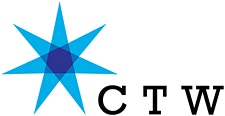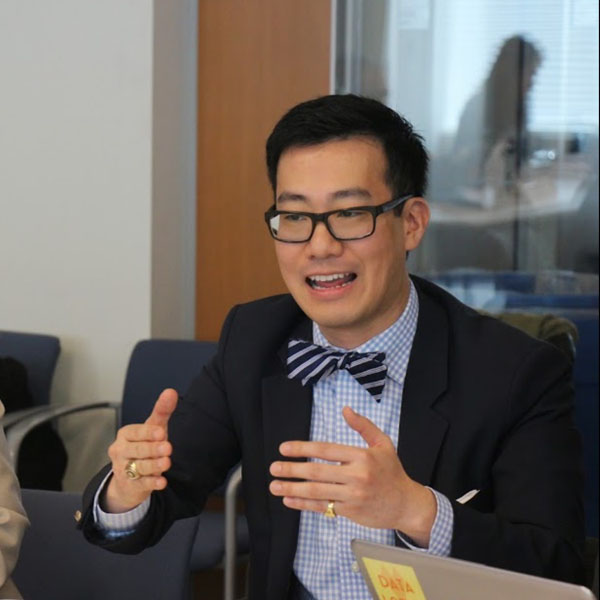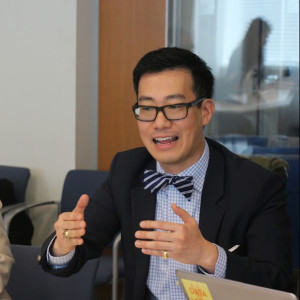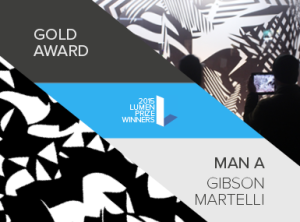A conversation in which we learn why Dr. Dennis Anderson started two Centers for Advanced Media and Entrepreneurship at Pace University and St. Francis College, has been inspired by new media art for fifteen years, and is comfortable with everything important being either in his head or in The Cloud. By Carla Rapoport.
Carla is the Founder of the Lumen Prize Exhibition.
Dr. Dennis Anderson is Chairman and Professor of Management and Information Technology at St. Francis College, New York City. As an academic entrepreneur, he founded and serves as Chairman of the Center for Entrepreneurship and the Institute of E-Government and Global Sustainability. Prior to this appointment, he was a professor of information systems and Associate Dean at Pace University and served as Director of the University’s Center for Advanced Media. He is a strong advocate of technology-enhanced learning, emerging technologies, sustainable technologies, and knowledge entrepreneurship. He has taught at NYU Courant Institute, City University of New York, and Pace University. Dr. Anderson is also an adviser and eminent expert to the United Nations on e-government and public administration.
CR: Can you tell me a bit about your educational and background in Management and IT? Are you a techie or more on the analytic side of IT?
DA: I’m one of those people who brings the tech and analytic sides together. I started in computer science – got a MS in computer science and thought I’d become a computer scientist specialising in artificial intelligence. That was my plan. Along the way, I realised I didn’t want to be a specialist – I wanted to bring other disciplines into computer science – arts, culture, music, the social sciences, these can all be applied to Computer Science. I ended up getting degrees in Mathematics, Education and a few other things. Every 5 years I went into something different. I like to work at something new all the time. I don’t like the idea of settling in with one thing for 40-50 years. Better to look for something and new and promote that and move into something different. My journay has been Computer Science, IT, math, and ending into Management and e-Government and working with the UN.
I guess I’m kind of a hybrid person – combining the tech and business analytic sides and bringing them together. That’s why I’m the chair of Management and IT here at St Francis.
CR: How long have you been at St Francis College and what’s your proudest achievement to date?
DA: I started my career at the College more than 20 years ago, then went away for 10 years and came back 5 years ago. Altogether I’ve been there 10 years. The first time was pre-internet — so much has changed. My proudest achievement is the creation of the College’s Center for Entrepreneurship, which recognises that this sort of thing is needed in a small college like St. Francis – it’s not to benefit just the students but the community at large.
The Center works with students and local businesses on how best to build their businesses, but also aims to bring necessary skills to the community. We provide advice to the community on a pro-bono basis – they can come to us and we provide the network and expertise in terms of technology and a range of different things to make the business be more competitive. Building the Centre is the proudest thing I’ve achieved here to date. It’s a case of a social entrepreneur achieving his mission.
CR: When did you first realise that artists were using and designing sophisticated software to create their work? What sort of digitally-created art do you like the most?
DA: I realised this was happening more than 20 years ago – when I was trying to be a serious computer scientist. I realised back then that there was a real interaction with art, culture, music and computer. The computer used to be what you saw in the back office – In the last few years, more and more the computer has come out of the back office and what you see is there’s more of an intersection with computers and art. Even 20 years ago, I realised there was a place for this combination of art and technology; that’s when I founded the New Media Center at Pace University. It was an early user of immersive technology and the Internet for collaboration on research. To lead that center, people from arts, communication and computer science were all collaborating. Out of that center we created a digital gallery. Every year we would have digital artists from lots of countries. This was maybe 15 years ago!
CR: We’re working together May 2016 to put on a symposium together and display a Lumen Prize exhibition in the gallery space at St. Francis in downtown Brooklyn. What aspects of the collaboration with the Lumen Prize are the most exciting and interesting to you?
DA: At the beginning of the PC, people had no real idea what it would mean for art. When I came across the Lumen Prize, I realised that this is what we anticipated in the past and here it is!
St Francis College Center for Entrepreneurship is excited to be partnering with the prestigious Lumen Prize to host the 2015 Lumen Exhibition at the College as part of Creative Tech Week in 2016. The Center promotes the creativity in entrepreneurship and this exhibition is an excellent example of how people from technology and digital media can come together to create new arts.
Personally, what I find exciting about this kind of art is the immersive technologies where the audience are brought in to meet each other and interact with each other and the art at the same time. I appreciated that spirit as much as the digital art itself.
CR: What do you find most inspiring/interesting about being part of the first New York city-wide Creative Tech Week?
DA: This is the thing – we are trying to open a new public space at St Francis College – a space aimed at bringing together all those who are involved in digital media arts. This city has so many creative people, but the idea of gathering people from across the city to link up thru one week – this is a very exciting thing for the city and for those of us who will be participating. This event has a lot of potential to create connections across areas and disciplines. A new festival for artists and technologies to come together – what could be better than that?
CR: And just for fun: The fire alarm has just sounded and you’ve got time to rescue just one thing from your office – what would it be?
DA: Nothing. Because every thing important is digital and lives in the cloud. The most important thing in the world is experience. Millennials – our students – we find increasingly they are most interested in experiencing things rather than accumulating things.
Following a career as an international business journalist with The Financial Times and The Economist Group located in Tokyo, Hong Kong and London, Carla Rapoport moved into arts management in 2010 and founded the Lumen Prize Exhibition in 2011. She has organised and assisted with the curation of over 12 Lumen Prize shows in cities around the world.




